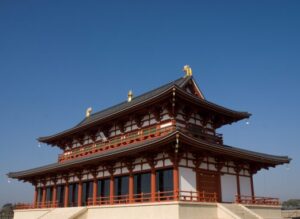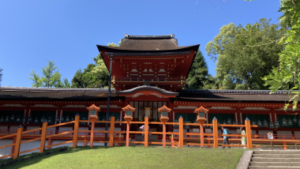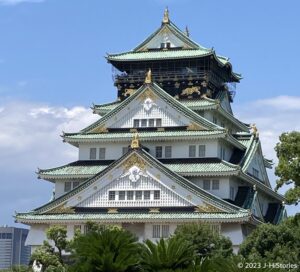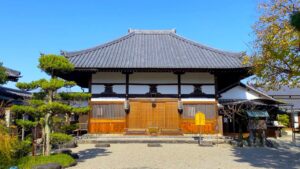Heijo-kyo Rises: Guided by Fujiwara Fuhito
Heijo-kyo, the capital of the Nara period (710–794), was relocated by imperial decree of the 43rd Reigning Empress Genmei (660-771, 元明天皇) in 710. Spanning an area similar to that of modern-day Nara City, it featured Suzakuouji Avenue, which ran straight from north to south, from the Daigokuden Palace through the Suzakumon Gate to the Rajomon Gate […]
Dazaifu Tenmangu, Enshrines Sugawara Michizane as The God of Learning
Dazaifu Tenmangu Shrine enshrines Sugawara Michizane (845-903, 菅原道真), a renowned scholar who supported the 59th Emperor Uda (867-931, 宇多天皇) as a ‘Monjo-hakase’ (a scholar of the highest rank), offering his extensive knowledge and insight during the emperor’s reign. The shrine is the head of the 12,000 Tenmangu shrines across Japan. Sugawara Michizane is revered as […]
Kasugataisha: A 1,300-Year-Old Sacred Shrine in Nara
Kasgataisha Shrine in Nara has a 1300-year-old history. Feeling the spituality from the sacred deer, mountains, and forests, the all are the divinity of Kasuga's God.
Osaka Castle History: An unsurpassed Samurai Hideyoshi’s ambition to become a ruler of Japan
Osaka Castle was built by Toyotomi Hideyoshi. Along with the castle, its castle town, known as a "Water City," was also constructed. Unfortunately, the castle was burnt down during the Siege of Osaka in 1615 after Hideyoshi's death. Despite the destruction, the castle town demonstrated its logistical capabilities and played an important role as an […]
Asukadera, the First Full-scale Buddhist Temple in Japan
Asukadera Temple was the first full-scale Buddhist temple in Japan, spending approximately 200m from east to west and 300m from north to south. It was built in the capital province of Asuka in 596, using various advanced technologies in architecture, geology, and painting. In the face of the threat of falling into the tributary nation […]





